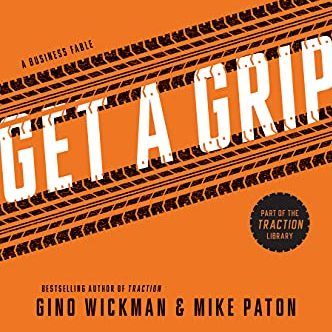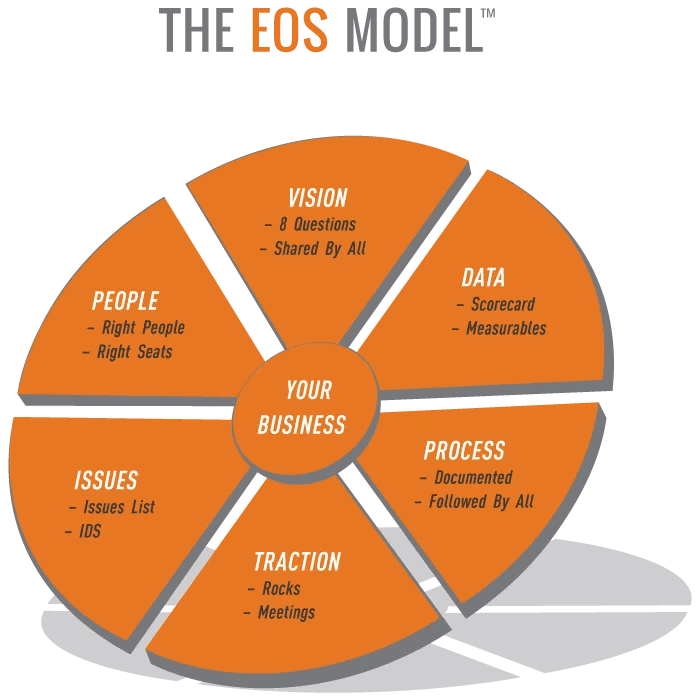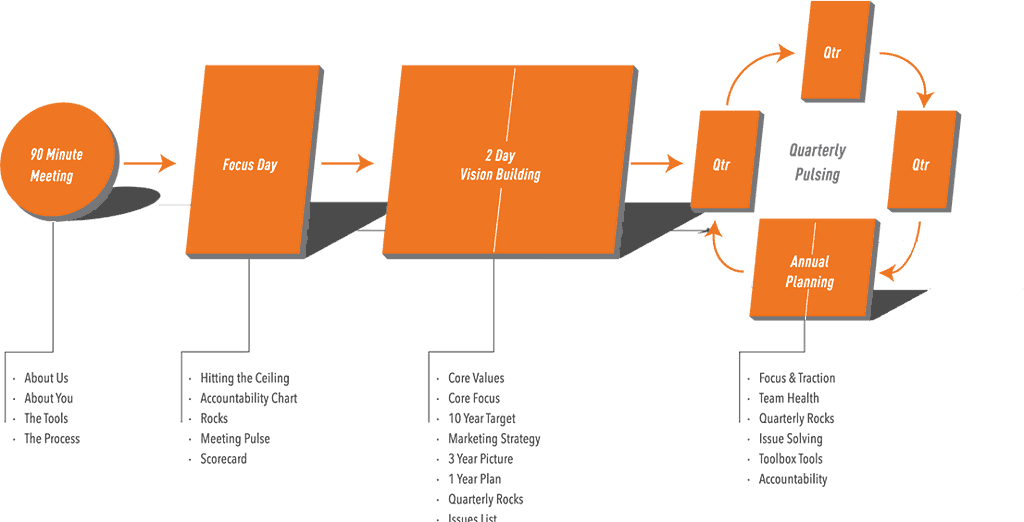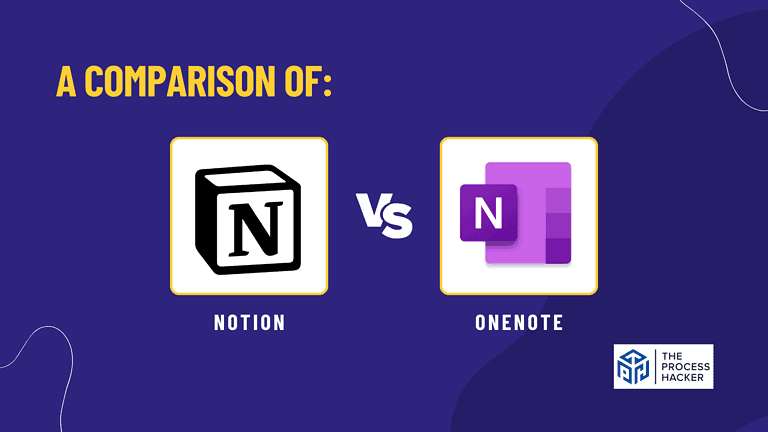Get A Grip by Gino Wickman | Book Summary
In their book, Get a Grip, authors Gino Wickman and Mike Paton tell a fictional business fable about an entrepreneurial company hitting the ceiling.
In response, the company’s leadership implements a practical, proven methodology that provides structure and significantly improves its business operations.
Buy Get A Grip on Amazon

Get A Grip by Alex Hormozi
How to Get Everything You Want From Your Entrepreneurial Business
That business system is the Entrepreneurial Operation System (EOS), which Gino Wickman originally wrote about in his book Traction: Get a Grip on Your Business (book summary).
EOS provides a complete framework of simple, practical tools to help entrepreneurs structure and scale their businesses. The authors have personally taken hundreds of companies through EOS, so they embodied their true stories with this book.
Download the PDF Book Summary for Get a Grip by Gino Wickman
Chapter 1: The Incident
Eileen Sharp is a business owner. She and her friend Vic started “Swan Services” about ten years ago, which today is worth $7 million and has 35 employees. Before the past 18 months, the company had been profitable and had grown quickly.
Since then, Swan’s steady growth had stopped. Everything seemed to be getting more difficult: winning new customers, keeping them happy, operating profitably, etc. Also, Eileen was having a tough time keeping up with the demands of her business, and she regularly missed important events with her family.
Quarterly Meeting
Their quarterly meeting was starting, and she prepared everything to tell the company’s story to the leadership team for the last 18 months with the following individuals in attendance:
- Vic, CEO
- Eileen Sharp, Partner CEO
- Sue Meecham, Vice President of Sales
- Art Pearson, Marketing Director
- Carol Henning, Controller
- Evan McCullough, Vice President of Operations
During the meeting, Eileen detailed the disturbing signals in the previous five quarters:
- In Swan Service’s eighth year, revenues broke records and exceeded $7 million for the first time. However, the company has not reached its quarterly revenue goals since. In the previous year, revenue only grew 1.5% compared to the projected growth of 14% and was stagnant in this year’s first quarter.
- Profitability has suffered, as the company invested heavily after a great year to keep growing, but those investments did not pay off.
- After studying the issue for a few quarters, Ellen felt comfortable relaying her finds as to the cause of these issues:
- The sales team missed its new revenue goal in three of the last five quarters.
- Existing customers had started leaving, which was a new phenomenon.
- Last year, labor costs had significantly increased, but Swan hired more people and elevated talent to work toward its five-year goal of $20 million in revenue.
- Also, a few key employees recently resigned even though Swan Services put more money into its employees. None of them cited internal problems in exit interviews, but it seems that the once-great corporate culture was eroding.
They didn’t come to an agreement or a plan of action. The consensus was that the root cause of all these crises seemed out of their hands. The meeting got messy and bounced around topics of sales, marketing, spending, etc. Some made nasty comments, and everyone eventually got on the defensive. Vic and Eileen got into an argument, and Vic became enraged.
Eventually, Eileen quit the meeting and the company for the day. Vic tried calling her afterward, but she didn’t respond. Vic was more unstructured, whereas Eileen was more ordered, so she joined the Twin Cities Business Roundtable for help. There, Eileen met Miguel, who she told about the company and its issues. As something similar happened to him, Miguel responded by giving her the business card of Alan, an “implementer” with the words Traction on the back!
Chapter 2: Fit
The following two weeks were turbulent despite Vic’s attempts to mend fences with Eileen and re-establish himself as a team player. Finally, Ellen contacted Alan and informed him of the company’s issues for the past 18 months. Later, Alan pitched his working method “as a straightforward, holistic “way of operating” an entrepreneurial company—a blend of timeless concepts and simple real-world tools.”
Eileen informed Vic how Miguel, a very wealthy businessman, had recommended Alan. Miguel provided other successful companies Alan had worked with, and Eileen phoned a few of them. Each company expressed nothing but praise for Alan’s work.
90-Minute Meeting
Alan told Eileen that he would give 90 minutes of his time to show what he could do for Swan Services. Later, Alan met with the Swan leadership team for the 90-Minute Meeting and explained that the meeting would consist of four points:
- About Us: Alan’s introduction
- About You: Understand where you’ve been, where you are, and where you’re going as an organization.
- The Tools: The tools used to resolve all the company’s issues.
- The Process: Helps the leadership team to get the most out of the business.
Then, the team needs to decide on whether the relationship will be a good fit going forward. After, Alan asked everyone to rate on a scale from 1 (worst) to 10 (best), the following:
- Internal meetings effectiveness: Average 4
- Organization alignment on each executive plan: Average 4
- Level of accountability: Average 3
Six Key Components

After that, Alan let the team know that they will work to strengthen the Six Key Components:
- Vision: “Getting everyone on the same page with exactly where the organization is going and how to get here.”
- Vision/Traction Organizer (V/TO): The streamlined strategic planning tool or V/TO requires the leadership team to answer eight questions to create a single compelling vision.
- Shared by All: This vision will be shared by all in the organization so that everyone is “rowing in the same direction.”
- People: “You need the right people in the right seats.”
- Right People: The right people share your Core Values and can be found with the People Analyzer tool.
- Right Seats: The right seats fit one’s skills and experience to excel in their job. The Accountability Chart tool helps build the ideal structure for the organization and determine the right seats with the major roles described as follows:
- Visionary: The visionary was very much described as Vic, having many ideas but getting bored very quickly.
- Integrator: Eileen fits this role as the person who harmoniously integrates the major functions of the business, who runs the day-to-day.
- Other Leadership Roles: Other major roles include Sales and Marketing, Operations, and Finance, which round out the Accountability Chart.
- Data: You need the following tools for everyone in the company to be strong:
- Scorecard: These metrics dashboards should contain five to fifteen weekly numbers (leading not lagging indicators) that give leadership teams an “absolute pulse” on the business.
- Measurables: These metrics will allow for more concise communication by cutting through feelings of subjectivity between employers.
- Issues: This component fosters strong communication in an organization where everyone is open and feels comfortable sharing their ideas.
- Issues List: Theis tool holds problems, challenges, ideas, and opportunities within teams, departments, and the overall organization.
- IDS (Identity, Dissolve, and Solve): This problem-solving method allows people to face issues healthily. As a result, they would get to a solution without getting struck by the discussion part.
- Process. The process will work out efficiently if there is a spirit of entrepreneurialism and discipline when it comes to systematizing your business.
- Documented: Simplifies company work into a handful of core processes using the three steps of Identify, Document, and Package.
- Followed by All: These processes must be universally followed so work products are consistent and people can be held accountable.
- Traction: “Everyone in your organization is disciplined and accountable, staying focused on the right stuff, and getting done what needs to be done to bring your vision down to the ground and move your organization forward.”
- Rocks: These are the 3-7 priorities that one focuses on for the next 90 days (12 weeks) or “90 Day World.” Rocks make goals and priorities much more manageable and prevent workers from losing focus.
- Meetings: Rocks require a meeting pulse, which are meetings that enable the team to know whether rocks are on track or not. Meetings also keep people focused on priorities and solving issues effectively.
Throughout the meeting, Eileen was intrigued and skeptical by the simplicity of the system. Alan had just finished overviewing EOS, documented in Traction: Get a Grip on Your Business (book summary).
EOS Proven Process

Next, Alan outlines the EOS Proven Process as follows:
- 90-Minute Meeting: Initial meeting to introduce the EOS system.
- Focus Day: This immediate full-day off-site meeting occurs with the leadership team to cover the five tools to “get a grip on your business.”
- Vision Building Sessions: These two meetings occur about thirty and sixty days after the focus day to ensure the implemented tools are working well and answer the eight questions in the V/TO.
- Quarterlies & Annuals: These meetings every 90 days to observe rocks and issues, get clear and aligned around the vision, solve the problems, implement improvements, and set priorities for the coming quarter or year.
Alan states that it takes an average of two years to see results as EOS is a way of life. Swan Services would be able to leave the process at any time, but the leadership team first needs to commit to the process fully.
After the meeting, Vic was surprisingly for the program but thought the company could implement it internally rather than turning over control to some consultant. Some of the other members of the team had mixed opinions of being necessary to unsure. Finally, Eileen agreed with Evan but felt that action was required rather than inactivity.
Download The PDF Book Summary For Get A Grip By Gino Wickman
Chapter 3: Focus
During the Focus Day Meeting, Alan presented the Objectives as follows:
Objectives
- Have fun
- Understand healthy and smart
- Think and work on the business
- Implement practical tools – Get more done
Check-In
First, everyone introduced themselves with the following:
- Name and Role
- Good News
- Expectations
Hitting the Ceiling
Then, Alan explained the concept of “hitting the ceiling,” which is when people in the company feel stuck or unsure what to do next, where to turn. To overcome this roadblock, Alan said that the team needed to master these five leadership abilities:
- Simplify: Keep things simple, and EOS is designed to help companies simplify.
- Delegate: Let go and stop trying to do it all. Instead, delegate tasks to the right person and elevate yourself in the role.
- Predict: Leaders need to predict well in both the long-term and short-term.
- Systemize: Document your core processes to form your business system, ensure consistency, and foster scalability.
- Structure: Establish the optimal organizational structure using the Accountability Chart, which identifies each employee’s role and responsibilities.
For more on leadership, check out The 5 Levels of Leadership (book summary) by John Maxwell.
Accountability Chart
Alan advised everyone to let go of their egos and duties because the right seats must be picked based on the team’s strengths. However, while choosing a new structure and the right seats, some issues occurred when rearranging the firm. After much debate and ego clashes, the company was finally divided into six critical functions with five positions for each seat.
Alan pushed them to give each other serious comments on whether they could fill the seats based on the three levels of “GWC” (Gets it, Wants it, and has the Capacity to do it). As a result, some conflicts occurred among peers who were not used to hearing feedback. It was awkward at first, but they put their egos aside and expressed their genuine opinions about each other’s work. Everyone took the seat of spending most of their time doing what they loved to do.
Rocks
Alan invited each leader to write down their top three Rocks for the next 90 days. Next, the team decided whether to keep, kill, or combine issues to end up at five priorities. Alan then showed how to clearly define the Rocks by making them “SMART—specific, measurable, attainable, realistic, and timely” and assigning them to an owner for accountability:
- Complete the trifold brochure and website draft. – Art
- Survey current clients and implement a client retention plan. – Evan
- Close two “A” deals and complete ten key account plans. – Sue
- Decide on project management software. – Carol
- Implement ops staffing changes to improve profitability. – Eileen
Every member of the leadership team then created 3-7 Rocks for their role and shared them with the rest of the group.
Meeting Pulse
The meeting pulse has two parts:
- Quarterlies and Annuals: Alan would run these meetings every 90 days for the duration of his contract.
- Weekly: Each leadership team member would have to master the weekly Level 10 Meeting, which was a 90-minute weekly meeting.
Some thought these weekly meetings were a waste of time, but Alan convinced them that it was necessary to improve Swan Services. They would follow the Level 10 Meeting Agenda:
- Segue (Good News) – 5 minutes
- Scorecard – 5 minutes
- Rock Review – 5 minutes
- Customer and Employee Headlines – 5 minutes
- To-Do List – 5 minutes
- IDS (Issues List) – 60 minutes
- Conclude – 5 minutes
- Recap To-Dos
- Cascading Messages
- Rating 1-10
Alan claimed that they had to be concise, disciplined, prepared, and on time. He assured the team that the Level 10 meetings were vital for the organization.
Scorecard
For metrics, Alan instructed them to list five to fifteen numbers that were important for the team to get an absolute pulse on the whole business. Each number was examined to determine importance, whether it made sense weekly, and if it could be gathered each week. Eventually, the team agreed to 14 numbers for their Scorecard and assigned someone responsibility. Alan assured them that the Scorecard would take up to one to three months to get everything right.
Next Steps and Conclusion
Alan finally ended the meeting with a lot of work to do. During feedback, everyone but Carol believed that despite the overwhelming information, the meeting was successful, and they were full of hope. Alan asked them to be patient, stay focused, and assured them that it would all be worth it.
Chapter 4: Vision Part 1
The Swan’s leadership team met with Alan again after a month for the first Vision-Building Meeting. Vic arrived late, which Alan later explained that everyone should be 15 minutes early because “on time” was considered late. Then, Alan set the objectives for the meeting:
Objectives (2 days)
- Master Focus Day Tools
- Clear Vision
- Clear Plan
- Issues List Clear
Check-In
For the last 30 days, Alan gave the team two quiet minutes to record the following:
- Bests – your best news from the last thirty days (one personal highlight; one business)
- Update – a list of what’s working and what’s not working at Swan Services
The leaders seemed upbeat and had primarily positive updates. Swan Services was improving on sales opportunities, and the Rocks were on track. Everyone was motivated with the new tools provided, even though some had problems adapting to the new model.
Review Focus Day Tools
Alan went over the Focus Day tools from the last meeting and reiterated their importance:
- Hitting the Ceiling: Alan highlighted the importance of mastering five leadership abilities in hitting the ceiling.
- Accountability Chart: The team analyzed the chart again and made changes to the Marketing and Sales roles to create a new Sales/Marketing position. The team restructured the company to move managers to their right seats.
- Rocks: The team reviewed rocks on the new rock sheet to report that 17 of 25 of the Rocks were on track. Alan reminded this tool allows the leaders to provide status updates, and trust was vital. They needed to be open and accountable to each other.
- Meeting Pulse: Alan reiterated the importance of sticking to the Level 10 Meeting agenda, especially spending 60 minutes prioritizing and solving issues. The issues should be solved using the Identify, Discuss, Solve (IDS) framework.
- Scorecard: Finally, Alan asked the team if the Scorecard provided an absolute pulse on the business. Evan seemed to have trouble finding the right numbers to measure operations, and it was added as an issue on the issues list.
Vision/Traction Organizer (V/TO) Part 1
Alan began by explaining that vision requires traction to be in place. With clear accountability and discipline in place, discussion about the future and the decisions to make become more real. Alan led the team through answering the V/TO’s first three questions:
1) Core Values: These set of three to seven essential, enduring principles define the company’s culture. To achieve this, Alan asked the leadership team members to pick employees that embodied Swan’s culture to extract core values. Eventually, the team decided on these five:
Swan’s Core Values (first meeting → second meeting):
- Thirst for knowledge/Never satisfied → Grow or die
- Does the right thing
- Gets things done/Reliable → Do what you say
- Humble/Confident → Be humbly confident
- Helpful/Positive/Can-do attitude → Help first
Note that the core values evolved between the first and second Vision-Building Meetings.
Then the team used the “People Analyzer” to test their new core values to determine fit for each leader and set a bar. Carol was unfortunately under the bar for not being helpful and positive with a can-do attitude. Eileen told Carol that hard work would help her clear the bar.
2) Core Focus: This question avoids losing focus on the company, which occurs during slow periods or due to over-confidence. The two parts to the core focus are as follows:
- Passion, Cause, or Passion – who you are; the reason for being or the thing that gets you out of bed each morning
- Niche – what you are; the thing the company is genetically encoded to do
Next, Alan asked the team to review a list of real-world examples and a checklist describing the essential attributes of a clear, effective purpose, cause, or passion statement. The group quickly agreed to the following core focus:
Swan’s Core Focus:
- Passion: Building a great company with great people.
- Niche: Solving real problems with the right technology.
3) 10-Year Target: This is the long-term goal that should be intimidating in that it energizes people to take action. Whatever the timeframe, the team needs to agree to want it and work hard to make it happen. The group reached a consensus on the following long-term goal:
Swan’s 10-Year Target: $40 million in Revenue and 15% Net Profit.
Conclusion
Alan concluded the meeting and made sure that the team understood would they needed for Swan Services to stay on track. Then, he posed three questions to finish:
- Feedback?
- Expectations?
- Rating 1-10?
Alan thanked Carol for dealing with the core values exercise and congratulated the leadership team for another open, honest, and productive meeting.
Download the PDF Book Summary for Get a Grip by Gino Wickman
Chapter 5: Vision Part 2
Swan’s leaders left Alan’s office feeling they were working on something significant. However, Eileen still had some challenging interactions ahead with Carol regarding core value fit and changes to the Accountability Chart. Eileen got Carol to affirm to work to be better as she said, “It’s going to be hard, but I’ll do it.”
Four weeks later, Swan’s leadership team met with Alan for the second Vision-Building Meeting. In this meeting, the team got there early, and it started on time. Alan promised that they would finish the objective given in the first meeting:
Objectives (2 days)
- Master Focus Day Tools
- Clear Vision
- Clear Plan
- Issues List Clear
First, Alan reviewed all the work done on the Core Values, Core Focus, and 10-Year Target before moving on to answer the remaining questions on the V/TO.
Foundational Tools
Alan reviewed the Foundational Tools:
- Vision Traction/Organizer (VT/O): The VT/O replaces the “Hitting the Ceiling” tool from the Focus Tools.
- Accountability Chart: To help them improve the Accountability Chart, Alan explained the Delegate and Elevate tool. Then, roles could delegate tasks they didn’t like and elevate themselves to doing tasks they enjoyed.
- Meeting Pulse: Alan walked through the agenda of the Level 10 Meeting again to make sure that the team knew how to conduct each part of the meeting.
- Rocks: Alan emphasized that when reviewing Rocks, they are only done or not done, and there is no in-between. When setting Rocks, you should aim to achieve it.
- Scorecard: The team felt that the metrics provided an absolute pulse on the business. The performance improved as activities and outcomes were measured weekly.
Vision/Traction Organizer (V/TO) Part 2
After reviewing the tools, Alan reviewed the first three questions of the VT/O. The team had aligned on their updated core values, and Vic was ready to give the Core Values Speech to the entire company. The Core Focus and 10-Year Target remained the same, and the team confirmed it. Then, Alan led the group through the remaining five questions of the VT/O:
4) Marketing Strategy: Clarifying this effort will focus and optimize your sales and marketing efforts to communicate coherently with the right customers. It consists of four parts:
- Target Market – the demographic, geographic, and psychological profile of ideal prospects to identify where to focus proactive sales and marketing efforts (build your storybrand)
- Three Uniques – the attributes that set you apart from competitors in your industry and make you uniquely valuable to your customers
- Proven Process – a one-page visual that shows the entire relationship you have with your customers
- Guarantee – communicates to the client what happens if, for some reason, things don’t go as planned during the engagement
Alan took the team through each part, and the members could agree on everything except for the guarantee:
Swan’s Marketing Strategy:
- TargetMarket:
- Demographic: IT Directors or CFOs at tech-reliant firms with $100M+ revenue
- Geographic: Headquartered in the upper Midwest
- Psychographic: Looking outside to bring a strategic partner to solve tech issues
- Three Uniques:
- We’re real people who care.
- We’re experts in using tech to solve business problems.
- We do what we say.
- Proven Process: Yes
- Guarantee:
Alan said, “Now it’s time to bring your vision down to the ground,” moving from the 10-Year Target to the 3-Year Picture, 1-Year Plan, and Quarterly Rocks.
5) 3-Year Picture: This shorter-term goal would assist them in building toward the 10-year Plan, resolving major issues, and planning for the year ahead. A 3-Year Picture would require a day, profit and revenue objective, and measurable goals. Consider the number of and changes in personnel, new business lines, new technology tools, new offices, new branding, and so forth.
Swan’s 3-Year Picture:
- Future Date: 12/31/20XX
- Revenue: $11M
- Profit: 10% or $1.1M
- Measurable: 50 projects at $100K+ (large project)
- Rocks:
- 60 RPRS
- Thriving culture
- Strong sales team of 8 People
- New sales office in 1+ major markets
- All core processes are documented, simplified, and FBA
- New company headquartersInternal IT seat
- HR seatDeveloper/BA/PM/Recruiting process working
- 40% recurring revenues
Many in the team seemed skeptical as the goals seemed too high, but Vic was convinced that they would make it as they were taking steps towards a significant change in the company. However, it would require each member of the team to believe and act differently as well.
6) 1-Year Plan: This annual plan should be tied to the company’s fiscal year. Next, set targets for the date, revenue, and profit for where the company should be at the year’s end. Finally, list the priorities and consolidate them down to the three to seven Rocks for the organization.
Swan’s 1-Year Plan:
- Future Date: 12/31/20XX
- Revenue: $7.25M
- Profit: 5%
- Measurable: 20 projects at $100K+
- Rocks:
- Implement EOS
- Sales Team (RPRS)
- Implement marketing strategy
- Hire Ops Leader (RPRS)
- Core processes documented, simplified, and FBA
7) Quarterly Rocks: Similarly, the team needs to establish the company’s 90-day priorities as well as those for departments and individuals. The Rocks should be SMART and are due at Quarterly Sessions. These meetings would occur four times a year, three times for quarterly sessions and one time for a two-day annual planning session, with him helping them develop the quarterly meeting pulse.
Swan’s Q2 Rocks:
- Future Date: 6/24/20XX
- Revenue: $3.5M
- Profit: 5%
- Measurable: 8 projects at $100K+
- Rocks:
- Focus sales and marketing on the target market – Sue
- Sales Rep. RPRS – Sue
- Close three “A” deals – Sue
- Roll out EOS Foundational Tools – Eileen
- Fill Ops Leader seat – Eileen
- Implement project management software – Evan
8) Issues List: Last, Alan discussed divided issues to be long-term or short-term:
- Long-term: Live on the V/TO as they can be addressed during the next quarterly session.
- Short-term: Need to be resolved faster and are on the agenda of Level 10 Meetings.
The team cleaned up their Issues List of about 30 items by killing it, adding long-term issues on the V/TO, or adding short-term issues to weekly agendas.
Swan’s Issues List:
- Billing accuracy
- Scorecards and measurables for all
- Sue – enough time?
- Guarantee?
- Define HR seat
- Define IT seat
- Next-gen technology
Next Steps and Conclusion
The team had just finished answering the eight questions of the Vision/Traction Organizer. Alan recapped the following:
- Goals – set by 1-Year Plan for completion before the year ends
- Rocks – the priorities set by Quarterlies for completion in the next 90 days
- To-Dos – the action items set by Level 10 Weekly Meetings for completion in the week
- Issues – the problems that are long-term addressed during Quarterlies or short-term addressed during Level 10 Meetings
In the end, Alan invited them to give feedback, expectations, and a meeting rating. Each person believed the meeting was beneficial and was looking forward to what was to come after that.
Chapter 6: Big Moves
Eileen and Vic agreed to start interviewing applicants for CFO. Also, they found a candidate for the Ops Leader role. Sue introduced Tom Bridgewater to Eileen, who was intrigued by the position and the company’s culture, so Eileen invited him out for coffee.
In an all-company meeting, the leaders unveiled the V/TO and the rest of the tools. During the meeting, Carol got into arguments, and Eileen and Vic took notice. They thought she didn’t fit in with their culture and started developing a backup plan if Carol left or reverted to her old behaviors and habits. Carol became frustrated and quit to no surprise.
First Quarterly Meeting (Q2-Q3)
At the end of June, the Swan Services leadership team had their first quarterly session with Alan. Eileen introduced Tom as the new VP of Operations. He reminded them of the Six Key Components of EOS and outlined the objectives for the day:
Objectives
- Clear Vision
- Clear Plan (same page)
- Resolve All Key Issues
Check-In
Alan went through the agenda. On that day, they would review their performance over the previous 90 days, re-evaluate their vision, ensure that everyone is on the same page, create a clear plan for the upcoming quarter by laying foundation stones, and address significant challenges. Alan asked the team to share their bests, an update, and expectations. The group seemed to operate with more cohesion, solve issues, and understand their roles.
Review Q2 Rocks
First, Eileen distributed copies of the Rock Sheet to each person and led the team through a Rock Review. The team completed 63 percent of their Quarterly Rocks, and Alan reminded them that the goal is 80 percent completion. The team improved significantly in planning and prioritization but knew they would improve setting Rocks for future meetings.
Next, the team discussed their financial metrics and key measurable. Unfortunately, the numbers were off track due to Carol leaving, but they believed they could get the revenue back on track by the year’s end. Alan then asked everyone to grade the quarter’s performance.
V/TO
Next, Alan led the team through reviewing the V/TO, one section at a time:
- Core Values: The Core Values were used to hire people but were not consistently communicated to the existing staff. Any problematic individuals that did not fit well were added to the Issues List.
- Core Focus: The team confirmed its Passion and Niche in its Core Focus but noted issues with the Sales Team operating outside of the Core Focus.
- 10-Year Target: The team also confirmed its long-range energizing goal of $40 Million in revenue with 15% net profit.
- Marketing Strategy: The company filtered prospects to those in their Target Market; however, the Three Uniques were not commonly used in the sales and marketing efforts. The Proven Process was published, and the Guarantee was not a big priority.
- 3-Year Picture: The team reiterated their commitment to achieving the picture for what the company would look like in three years.
- 1-Year Plan: The annual goals were examined for clarity and tracking. They found that the “Document Core Processes” goal was off track, so it was added to the Issues List.
- Quarterly Rocks: This section was reviewed earlier.
- Issues List: They went through the list to clean up what was solved. Next, the team created the meeting’s Issues List, which consisted of 32 frustrations, ideas, questions, or opportunities. They set the issues aside to deal with later.
Set Q3 Rocks
Alan wanted the team to create a list of the three to seven Rocks for the third quarter. The group started with 13 potential Rocks, had healthy debates, and consolidated down to five SMART rocks. After, Eileen predicted and set Q3 goals for revenue, profits, and measurables.
Swan’s Q3 Rocks:
- Future Date: 9/28/20XX
- Revenue: $5.2M
- Profit: 5%
- Measurable: 13 projects at $100K+
- Rocks:
- Document and implement Sales Process – Sue
- Define and publish Swan’s Proven Process – Sue
- Hire CFO – Eileen
- Complete Ops Department Scorecard – Tom
- Refine and implement Project Management Process – Tom
Identify, Discuss, and Solve (IDS)
Now, Alan said that the team had four hours to solve all the key issues. The Swan Services team prioritized the one to three most important issues on the Issues List:
1) Core Process Goal is Off Track: Alan led the group through addressing their process documentation using the Three-Step Process Documenter tool:
- Identify and align on the handful of Core Processes and their respective names.
- Document each process in detail, listing the significant processes in ten pages.
- Package your Core Processes in a handbook or document on a shared drive.
The team members listed potential Core Processes for Swan Services, resulting in a list of 14 processes. Finally, after some debate, the team arrived at a list of five Core Processes:
Swan’s Documented Core Processes:
- HR Process
- Marketing Process
- Sales Process
- Account Management Process
- Project Fulfillment Process
- Accounting Process
2) Selling Outside the Core Focus: Next, Alan led a discussion to clarify the sales process to find that the Sales Team is selling outside and bidding on the wrong technology projects. The team came to several solutions, which changed the sales presentation, eliminated selling the wrong projects to new clients, and refocused the Sales Team on the Core Focus.
3) Measuring ‘A’ Deals: Sue wanted to add at least one ‘A’ measurable to the Scorecard. After some discussion, the team added ‘A’ deals in the pipeline to the leadership team Scorecard.
After a break, the group prioritized the next set of issues. Next, the team employed the people analyzer to solve the personnel issues and coach those who did not meet the bar. Finally, as the day was almost over, the team stopped with 12 issues remaining and cleaned up the Issues List.
Next Steps and Conclusion
The team established to-dos to update the VT/O and create a new Rock Sheet. Alan introduced the ‘State of the Company’ speech to communicate the vision to their people. He ended the meeting with comments, expectations, and ratings.
Q3 Developments
During the next weekly Level 10 Meeting, the leaders approached their Rocks. Eileen was deciding on the CFO’s seat, and Alan suggested using a recruitment firm for such a critical position. A few days before the next quarterly meeting, Eileen hired Jeff Chadwick as CFO. She used their core values to ensure Jeff fit the culture. Vic needed help sharing his vision with the crew, so Alan suggested publicly rewarding employees who demonstrated outsized value and encouraged other executives to do the same.
Second Quarterly Meeting (Q3-Q4)
Jeff came early to the Quarterly as he had been warned and met Alan. After everyone arrived, the team quickly moved into the routine of the Quarterly Meeting. The check-in went well, and Eileen expressed that hiring Jeff would allow her to delegate and elevate. Jeff was enthusiastic about joining Swan as he was impressed by the company’s vision, strategy, and structure.
Alan led the team through the Rock review to find that about 90 percent of the Rocks were achieved, so he urged them to celebrate. Then, the group walked through the VT/O and found no issues with most parts except for the feasibility of the 10-Year Target. Then, the team cleaned up the Issues List and set Rocks for the fourth quarter. After setting Rocks, the team worked through the Issues List using the IDS framework.
The meeting ended with Alan preparing them for the Two-Day Annual Planning Session. He recommended that it be conducted off-site with social outings. The two days are as follows:
- Day One: Build team health, challenge yourselves and get 100 percent on the same page with your vision at a high level, and smoke out issues.
- Day Two: Bring your vision down to the ground, craft a clear plan for next year to achieve it, and resolve all your key issues.
Download the PDF Book Summary for Get a Grip by Gino Wickman
Chapter 7: The Annual
The team had improved significantly, and the Two-Day Annual Planning Session had arrived. The Swan Services team booked a stay at the Chambers Hotel in downtown Minneapolis. Alan reviewed the objectives of the first day:
Objectives (Day 1)
- Increase Team Health
- Clear Company Vision
- Issues List Clear
Then, the team went to work on the agenda for the first day.
Agenda (Day 1)
- Check-In: Alan had the team reflect on their years and list “greats:” three business greats, one personal great, and any unexpected greats that happened during the year. He also asked the leaders to share their specific expectations for the next two days.
- Review Last Year/Last Quarter: The team reviewed the V/TO to find that they achieved their 1-Year Plan revenue, profit, and measurable. Four of the five goals were also accomplished, with the fifth almost done. Next, Alan led the team through a Rock review, learning that Swan’s leaders had completed 71 percent of their Rocks.
- Team Health: To strengthen team health, Alan assigned the team to read Patrick Lencioni’s book, The Five Dysfunctions of a Team. He summarized the five levels of team health: trust, conflict, commitment, accountability, and results. Alan said the key was to build trust, and he let the team discuss their perception of team health, criticisms of other leaders, and areas of improvement. To conclude, Alan got each person to commit to One Thing (book summary): “In the coming year, I commit to start/stop….”
- Organizational Checkup: Alan asked each leader to complete the checkup based on their perception of Swan’s progress to figure out the state of the company and extract critical issues. The scores ranged from 67 to 73, with an average of 70. Alan assured the team that once key issues were solved, the score would climb above the target of 80.
- SWOT Analysis → Issues List: The SWOT Analysis identifies a company’s Strengths, Weaknesses, Opportunities, and Threats. He got input from each member and extracted relevant issues, including eight Weaknesses, eight Opportunities, and Six Threats.
- V/TO (through 3-Year Picture): Alan’s goal was to ensure that the team was 100 percent on the same page with Swan’s vision to the 3-Year Picture. The team reviewed the first five sections of the VT/O.
Throughout each section, Alan had the leaders reflect on what they had learned and what worked. Then, he wanted to have them get all their comments, questions, and confessions out in the open to be discussed. They all agreed that the company had never done better, everyone was on the same page, and that issue resolution was much easier.
Finally, the group concluded Day 1 of the Annual Planning Session. That night, the Swan leadership team had cocktails and got dinner together. They had a great time, and Eileen decided that Swan needed to have more time for fun activities going forward.
The next day Alan welcomed the Swan leadership team to Day Two of the Annual Planning Session. He presented the objectives for the second day:
Objectives (Day 2)
- Clear Plan to Achieve Vision
- Clear Plan for Q1
- Resolve Key Issues
Then, the team went to work on the agenda for the second day:
Agenda (Day 2)
- Check-In: To start the meeting, Alan asked each member to share their business highlight from Day 1. Then, we wanted each person to read their expectations from yesterday and restate them to the group.
- Review Issues List/3-Year Picture: The Swan leadership team reviewed every issue and portion of the 3-Year Picture. Alan wanted everyone to have clarity and be aligned on these aspects before getting to the 1-Year Plan.
- 1-Year Plan: The team predicted the metrics for the year to come. Alan recorded the revenue to be $8 Million, profit to be $800,000, and 30 projects of at least $100K. Next, the group decided on the three to seven most important goals for the next year to achieve Swan’s 3-Year Picture.
- Roles and Responsibilities: The team examined the Accountability Chart to determine whether the roles and responsibilities were clear.
- Budget: Jeff stated that he had everything he needed to complete the budget for the following year.
- Scorecard: The team walked through each measurable, and they updated goals accordingly to stay on track for the year.
- Establish Q1 Rocks: From the 1-Year Plan and Issues List, the leadership team proceeded to list three to seven potential Rocks for the first quarter. Next, the group deliberated and settled on the financial metrics and five SMART Rocks.
- IDS: The group cleaned up the Issues List and got to work. They started by prioritizing the first three important issues: (1) End runs; (2) Raj – right person, right seat; and (3) Predicting revenues. Next, they solved these issues and picked three more: (1) Guarantee; (2) Level 10 Meetings; and (3) Data security. Eventually, the team ran out of time.
In the end, Alan got the team clear on the next steps. Alan observed that the group was much healthier, powerful, and aligned than ever before. He saw the team had clarity in the vision and solved many vital issues. He concluded by having each member provide feedback, answer whether expectations were met, restate to One Thing commitments, and rate the meeting.
Chapter 8: Traction
Alan conducted Quarterlies and enjoyed watching Swan’s leadership continue to grow. They never missed their quarterly sessions, and everyone was using the tools. As a result, they managed to deliver projects on time and under budget to a growing number of delighted clients. Conflicts were solved professionally, and the team’s health was excellent.
At the next annual, they surpassed their targets and scored 81% on the organizational checkup. After that, they didn’t need Alan’s help anymore, and the team had graduated from the EOS process with Alan. But every now and then, they would reach out to him and tell him how things were.
One day, Eileen went to a Business Roundtable group social event. She met her old friend, Bill, who was looking rather stressed. Bill told her about the problems with his company and how he was about to let it go and start over. Eileen immediately knew what to do and handed him Alan’s number.
Download the PDF Book Summary for Get a Grip by Gino Wickman
Next Steps: Check out Get a Grip by Gino Wickman
In their book, Get a Grip, Gino Wickman and Mike Paton tell a fictional business story about Swan Services hitting the ceiling. In response, the company’s leadership implements the Entrepreneurial Operating System (EOS), which provides structure and significantly improves their business operations. I hope this blog post has inspired you to get your copy of Get a Grip or check out the rest of the EOS library:
- Traction (book summary): Helps entrepreneurs implement EOS and the Six Key Components to gain traction and grow their businesses.
- Rocket Fuel (book summary): Provides a guide for the integral relationship between a Visionary and an Integrator.
- How to Be a Great Boss (book summary): Helps leaders and managers at all levels of an organization get the most from their people.
- What the Heck is EOS? (book summary): Provide a complete and simplified guide on the EOS process and tools for your employees.
- The EOS Life (book summary): Live your ideal life “doing what you love, with people you love, making a huge difference, being compensated appropriately, with time for other passions.”
- Process (book summary): Helps you document, simply, and package your core processes such that they are followed by all in your organization.
- Entrepreneurial Leap (book summary): Helps you determine if you are an Entrepreneur-in-the-making, take the Entrepreneurial Leap, and become an entrepreneur.







